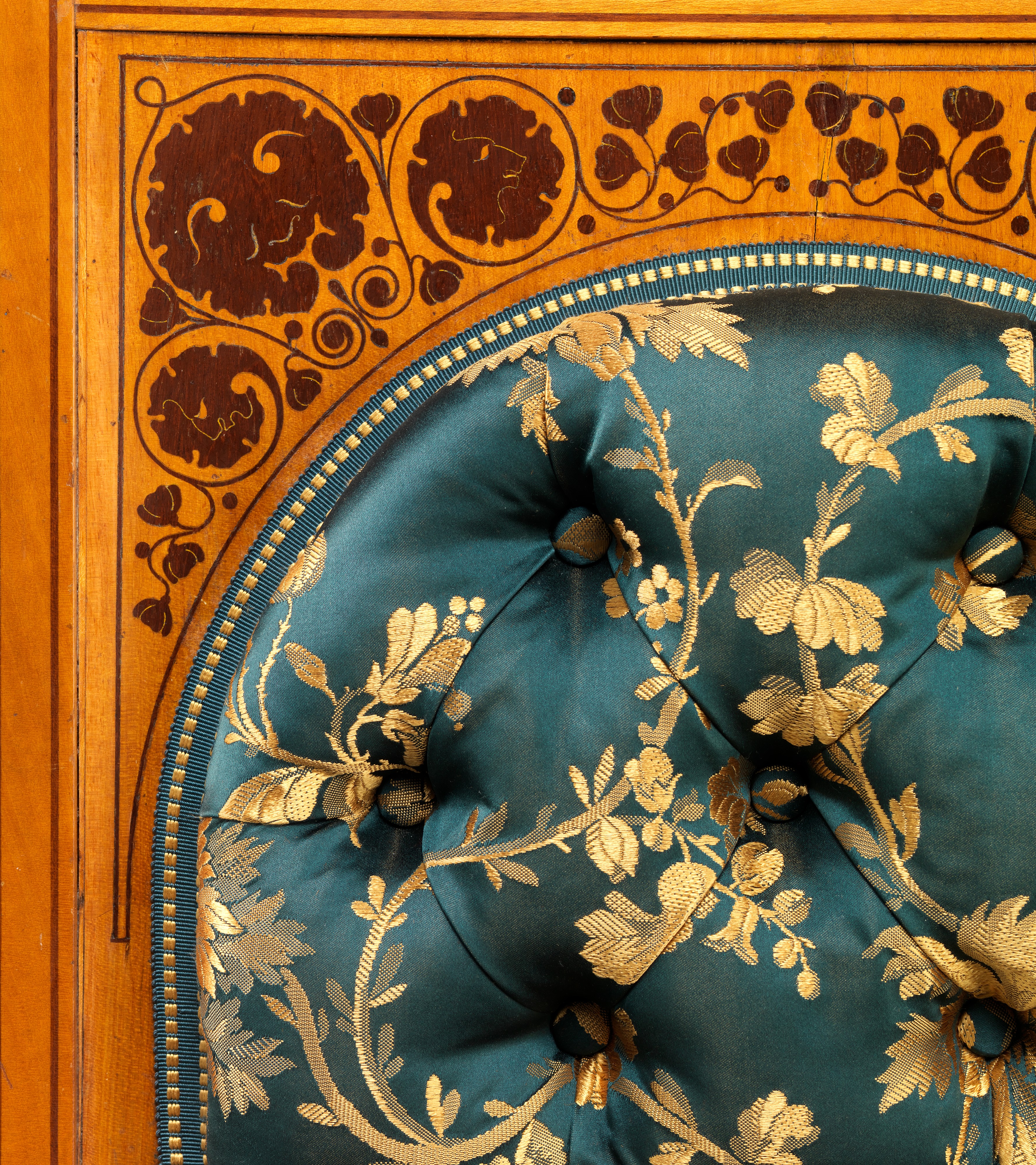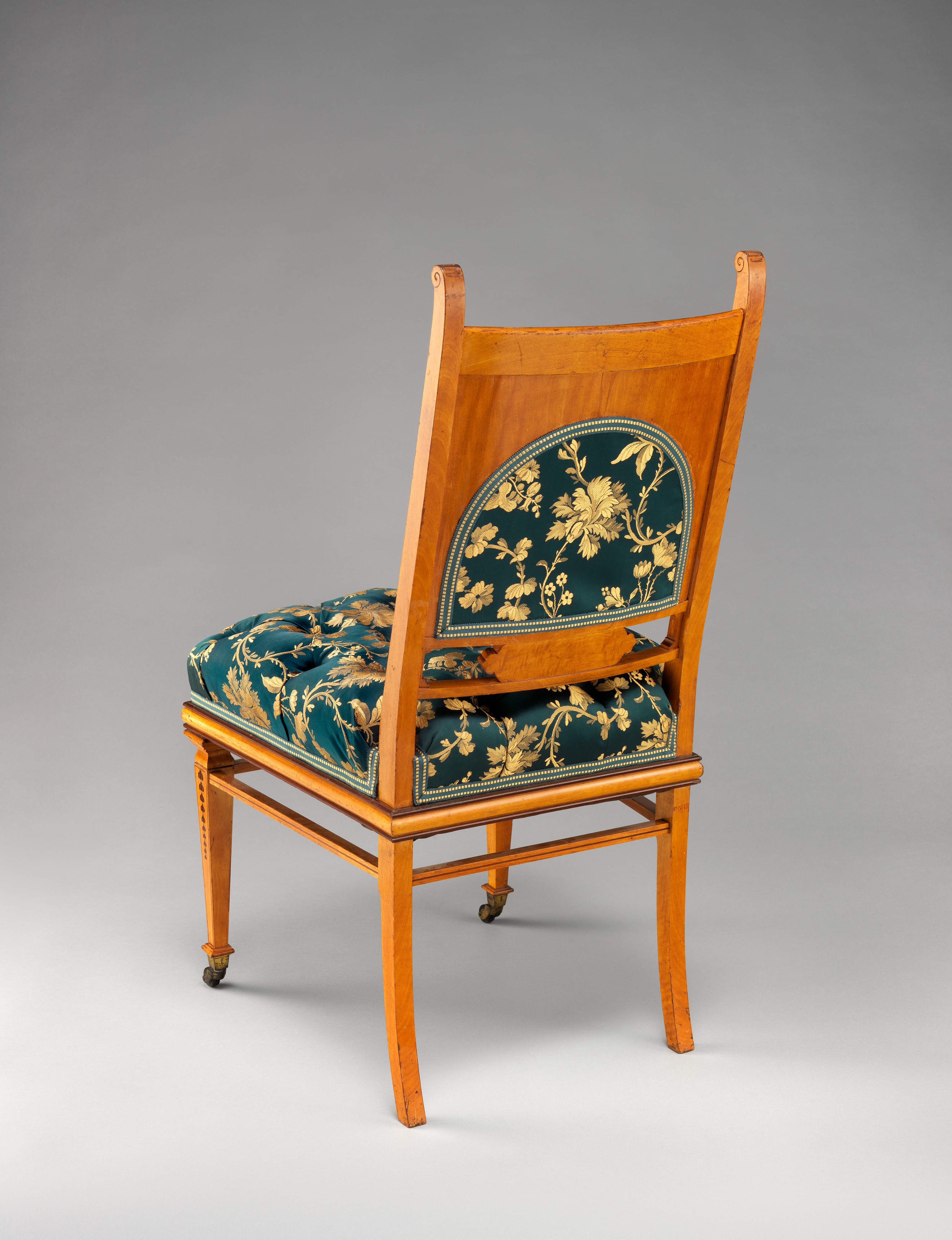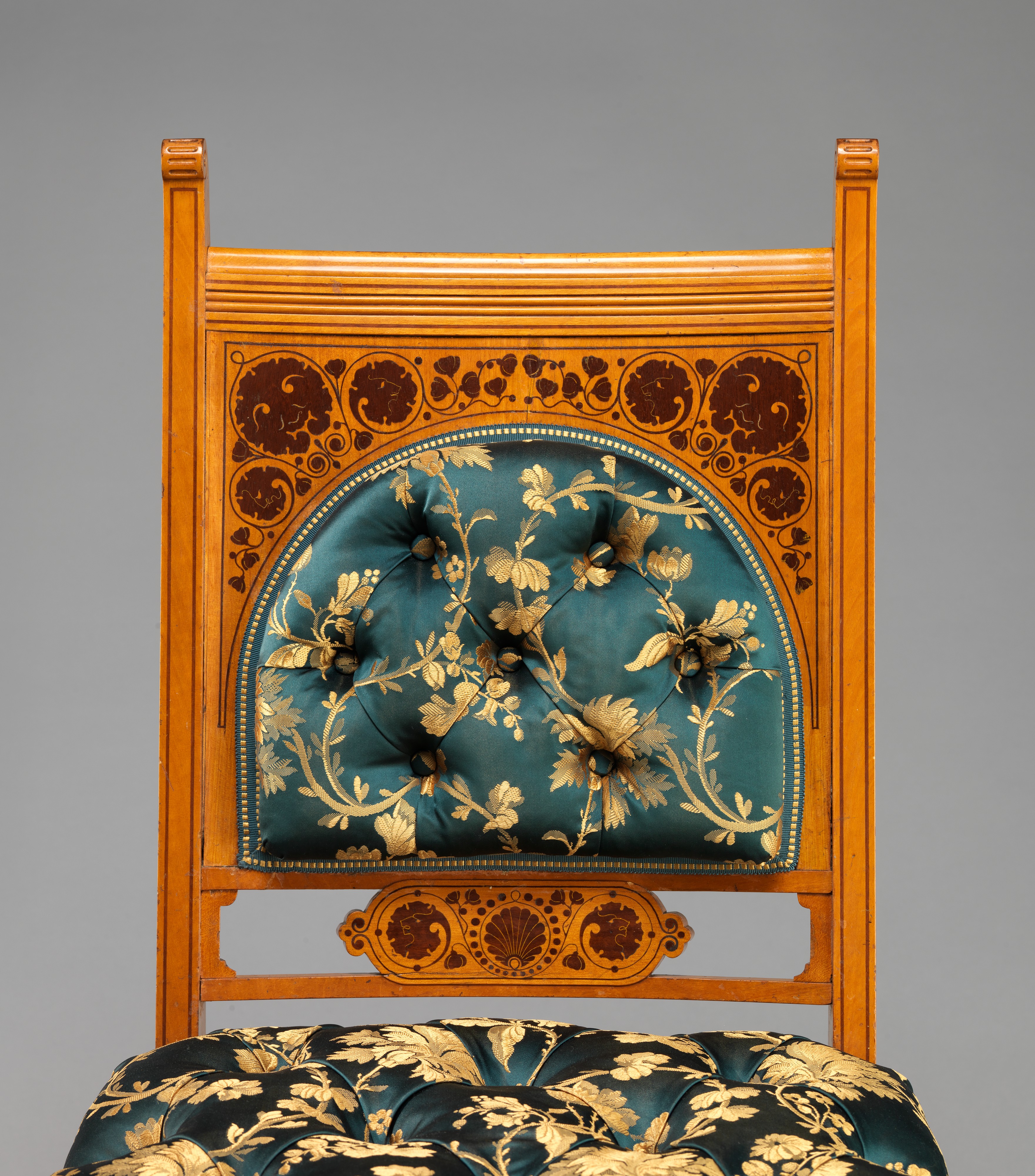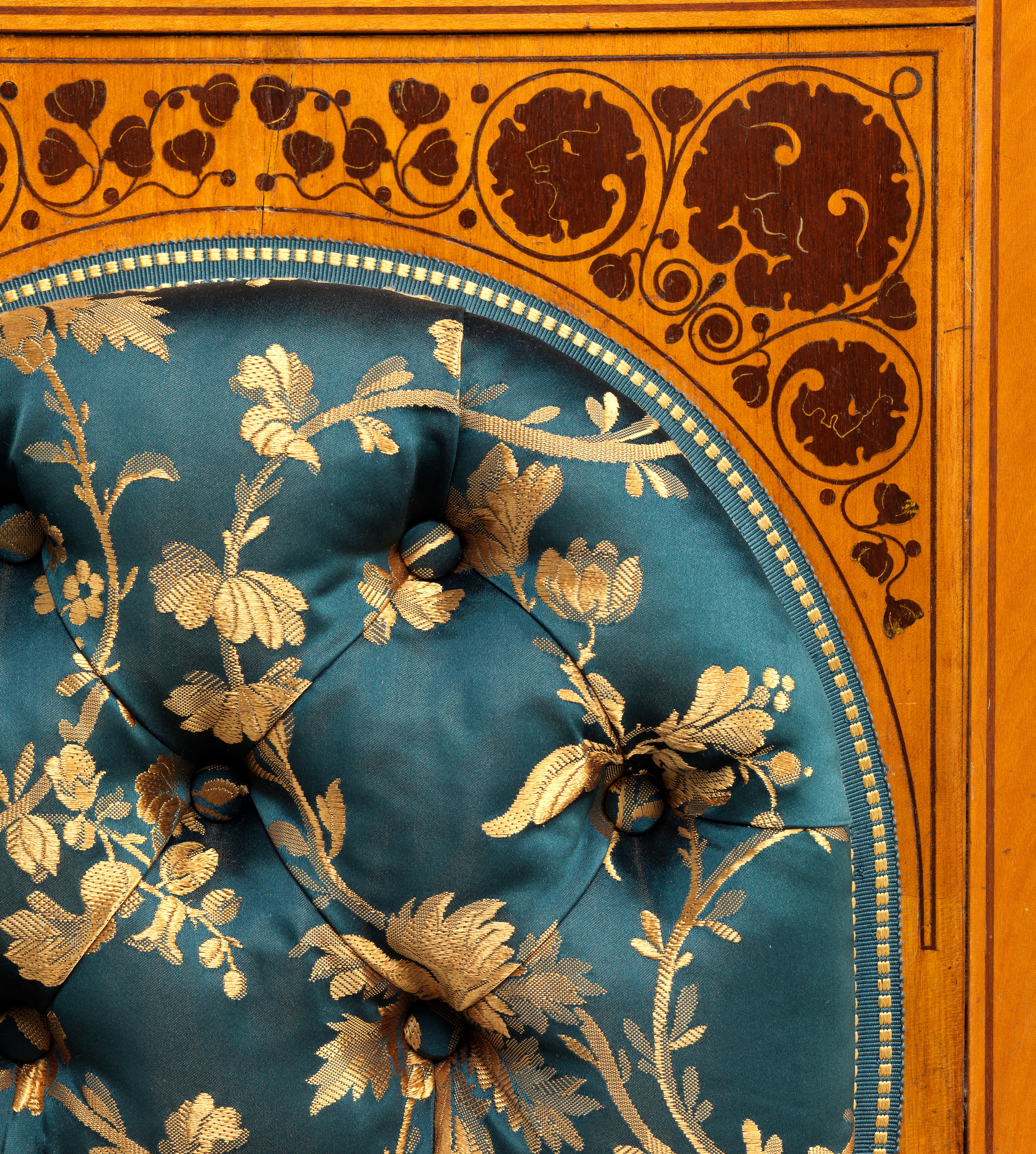Side chair
George A. Schastey & Co. American
George A. Schastey American, born Germany
In 1881, Arabella Worsham, then-mistress of railroad magnate Collis P. Huntington, hired George A. Schastey & Co. to decorate her townhouse at 4 West Fifty-Fourth Street in New York City. The resulting artistic interiors would have been considered the height of cosmopolitan style in the early 1880s and were emblematic of Worsham’s quest to fashion her identity as a wealthy, prominent woman of taste. When Worsham married Huntington in 1884, she sold the house, fully furnished, to John D. and Laura Spelman Rockefeller, who made few subsequent changes to the decorations. Following Mr. Rockefeller’s death, the house was demolished in 1938, yet some furnishings, large-scale architectural elements, and three interiors were preserved, and the rooms were donated to local museums by John D. Rockefeller Jr.
This side chair of satinwood and purpleheart, one of a pair, is part of the suite (2009.226.1–.4) that furnished Worsham’s elaborately decorated dressing room, one of the preserved interiors now installed in The American Wing (Gallery 742). These objects were part of a decorative program that encompassed every aspect of the room, including the architectural woodwork, lighting, stenciled wall-treatment, painted ceiling and frieze, textiles, and other furnishings. On the chair’s back, the marquetry decoration of grotesque masks and vines echoes the ornamental motifs in the dressing room’s architectural woodwork. The overall form is light and rectilinear. The tapered front legs with cascading bellflowers channel the spirit of English Neoclassical designers such as Robert Adam and George Hepplewhite. It rests on castors, allowing it to be moved easily within the room.
Although few objects can be attributed to George A. Schastey & Co., the high quality of their work – as seen in this fine example – was comparable to other prominent firms of the Gilded Age, including Herter Brothers and Pottier & Stymus. At its peak in the early 1880s, the firm employed at least 125 people in its workshops. Their distinctive designs are steeped in Renaissance sources with flourishes from the Islamic world and the British design reform movement.
This image cannot be enlarged, viewed at full screen, or downloaded.
This artwork is meant to be viewed from right to left. Scroll left to view more.









